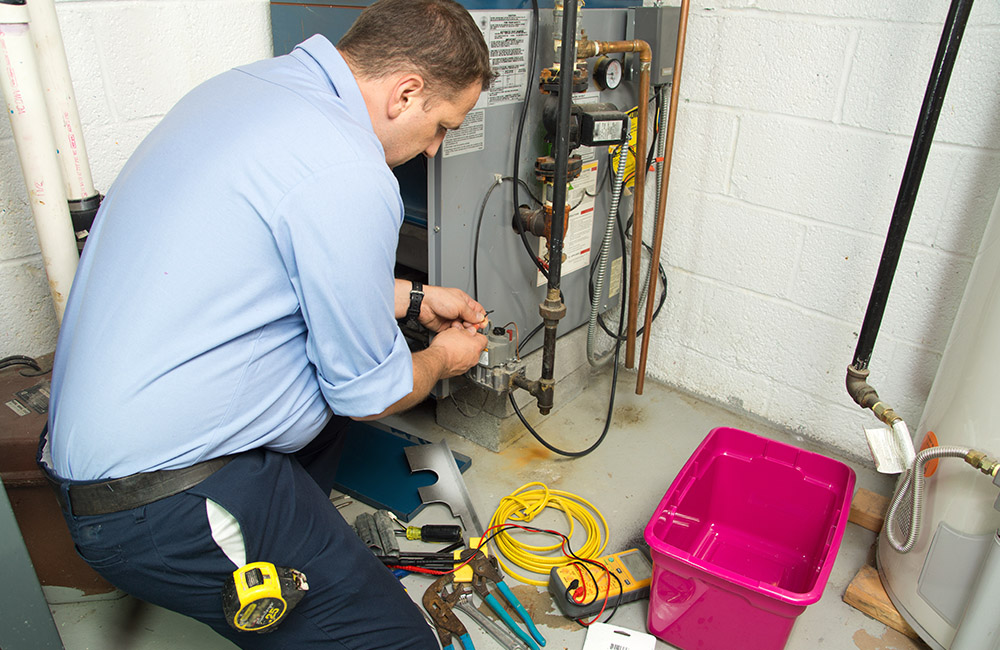Prevent These 4 Typical Heater Mistakes As Cold Weather Is BackPosted by Kiara on March 24th, 2021
According to the Weather Network, these last couple of weeks of moderate temperature levels have been what they like to call an "abnormality." Winter is winging its method back to Canada once again, reinforced by incoming arctic winds and bringing what specialists call "listed below seasonal" temperatures along with rain, sleet, snow and the rest of the normal suspects. Enjoyable, right? Along with freezing weather, winter season typically brings special challenges for the household thermostat. These prompt suggestions will help you avoid some of the most common heating errors. How a Thermostat Functions. For lots of months of the year, you don't touch your thermostat for heating purposes. But then winter season arrives, at home temperatures chill, and the first thing you consider is your thermostat. When you remain in an extremely small, enclosed area such as a vehicle, it's simple to assume that the heat dial works nearly immediately, like the typical vehicle accelerator. Press a button, turn it on high, and PRESTO! Heat floods the area and you feel warm immediately! According to the Telegraph, as much as 35 percent of homeowners confess to taking the exact same technique when warming their house. Simply set the thermostat up higher so the space will warm quicker. However there's a problem with this approach: Your thermostat can't change how fast it heats up an area, no matter the size of the space. It can only make sure that, in its sluggish and stable method, it ultimately strikes the mark in regards to your original temperature demand. As quickly as you change the thermostat setting, your thermostat should:. - Sense the current ambient air temperature level. - Determine what needs to change to meet your new air temperature request. Then it tells the heating system to:. - Get to work heating up the air. - Send the warmed air to every part of your space as evenly as possible. Whether you set your thermostat to the accurate temperature level you want or five degrees higher, your air will still be warmed at the exact same speed. But when you set it for a greater heat level than is really comfy, by the time it strikes the mark, you will be roasting and you will go to turn it right back down again, losing money along with comfort while doing hvac repair so. 4 Typical Heating Mistakes You Do Not Want to Make. These four common heating errors will end up costing you cash and putting more tension on your already hard-working heater. Error 1: Letting your house get too cold in the evening. Temperature extremes are not your thermostat's pal. Yes, you can possibly conserve some cents by turning your thermostat method down in the evening while everybody is asleep. However then what takes place when you wake up? It's freezing! So you crank the thermostat and your furnace begins working away-- method more difficult than is ideal-- trying to warm your space back up again. What to do rather: Objective for 1 or 2 degrees lower in the evening. This will still help you conserve cash, plus it will not cost you later on in wear-and-tear heating system repair work triggered by overwork. You can likewise configure your thermostat to start heating to your favored day-time temperature level about a half-hour prior to you need to get up. Mistake 2: Asking your heating system to do more than it can. When the outdoors temperature level reaches severe lows, this can position undue tension on your heating system. This is because, most of the times, specific types of heater are designed to heat effectively only when the outdoor air stays above no degrees. Some newer high-efficiency heater do a much better task of this, but in general, if you discover you keep adjusting your thermostat to reach higher temperature levels and absolutely nothing in fact changes, this may either suggest a repair is required or it may simply mean your heating system is currently doing all it can to keep you warm in extreme winter. Error 3: Leaving the heat on all the time. If you don't have a programmable thermostat and you have an old-school heating system that will not take an after-market add-on, you might have no choice but to keep the heat on continually or risk coming house to a freezing house. But if you have a programmable thermostat or a system that can take one, it will cost you more to leave the heater running continually than to shut it off and turn it on tactically. In reality, a programmable thermostat's task is to turn your heater on or off as required to preserve temperature level consistency according to your requirements. It can take some experimentation to determine a programs schedule that is comfy and cost-efficient, but when you do, the periods when your heating unit is not running will give it some much-needed R&R, and when it does run, you can know it is assisting to manage your utility expenses by keeping temperature level consistency. Error 4: Not sealing air leaks and unused areas during heater season. When temperature levels plunge, it is time to buckle down about keeping the warm air in and the cold air out. Sealing up air leaks (close and lock all windows and doors, weatherstrip and spot as required) can make sure warm air isn't sneaking out into the cold. And sealing off unused spaces (closing air vents, changing thermostats for zoning) can guarantee that warm air is used solely to heat your real living areas. Contact Regional A/C Specialist. If you're looking for more support, contact your local HEATING AND COOLING business for aid with HVAC and heating unit inspections and maintenance. Like it? Share it! |



